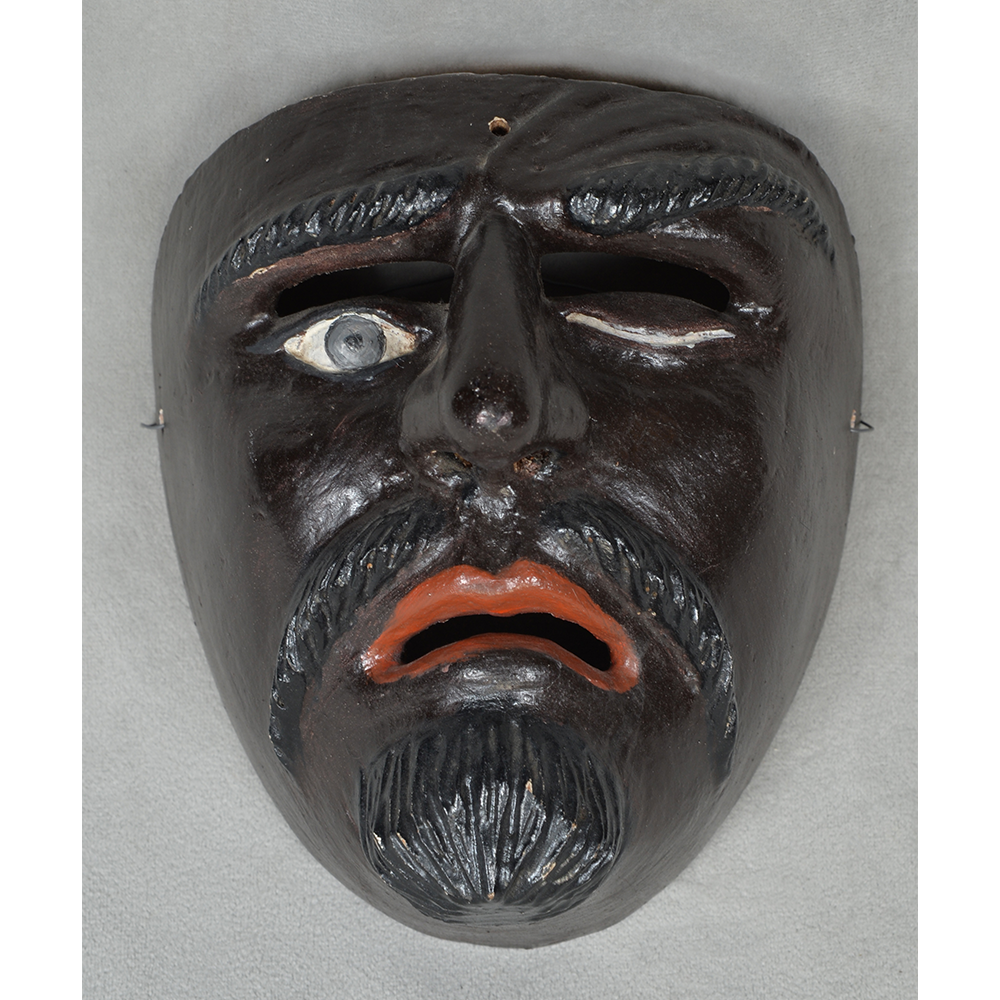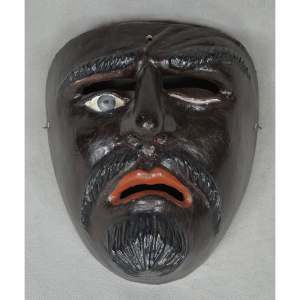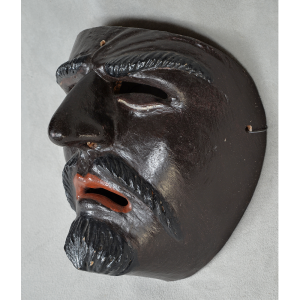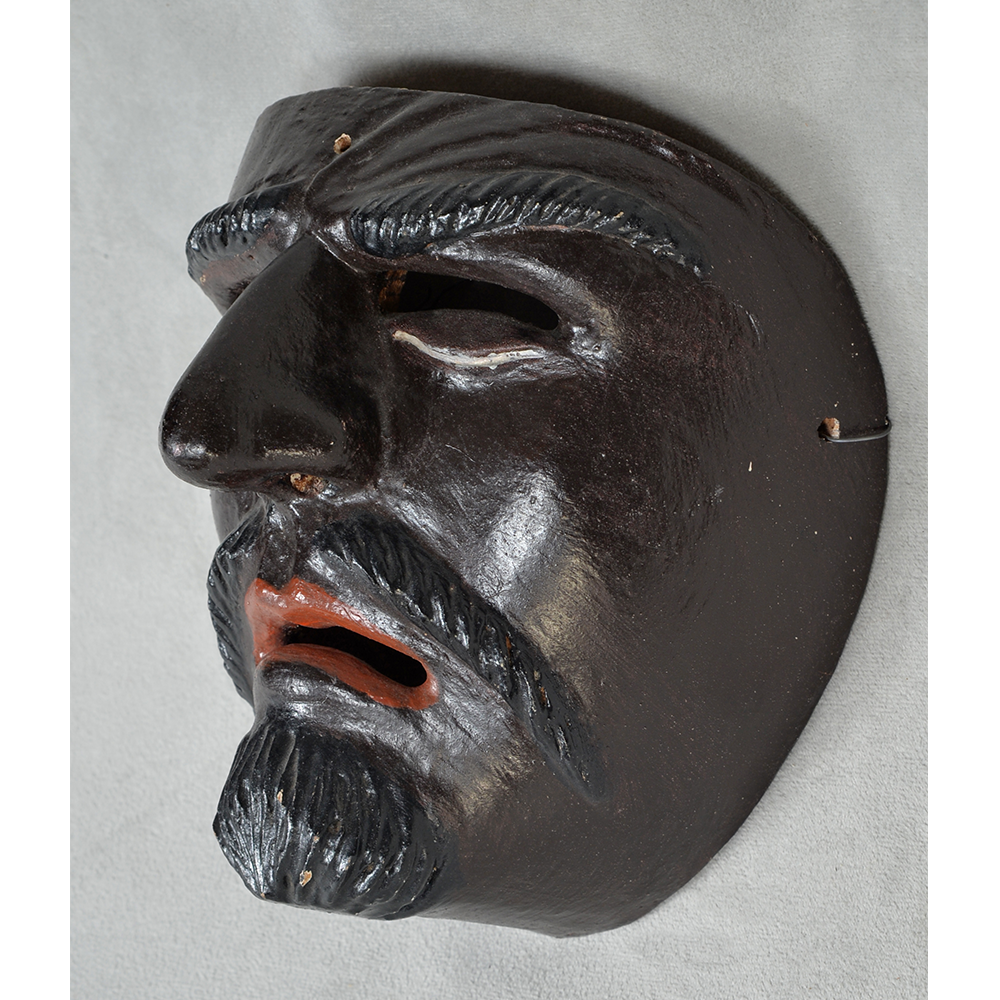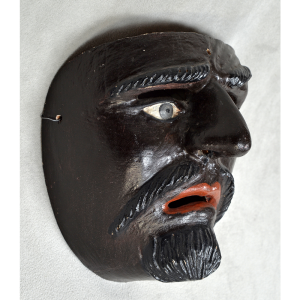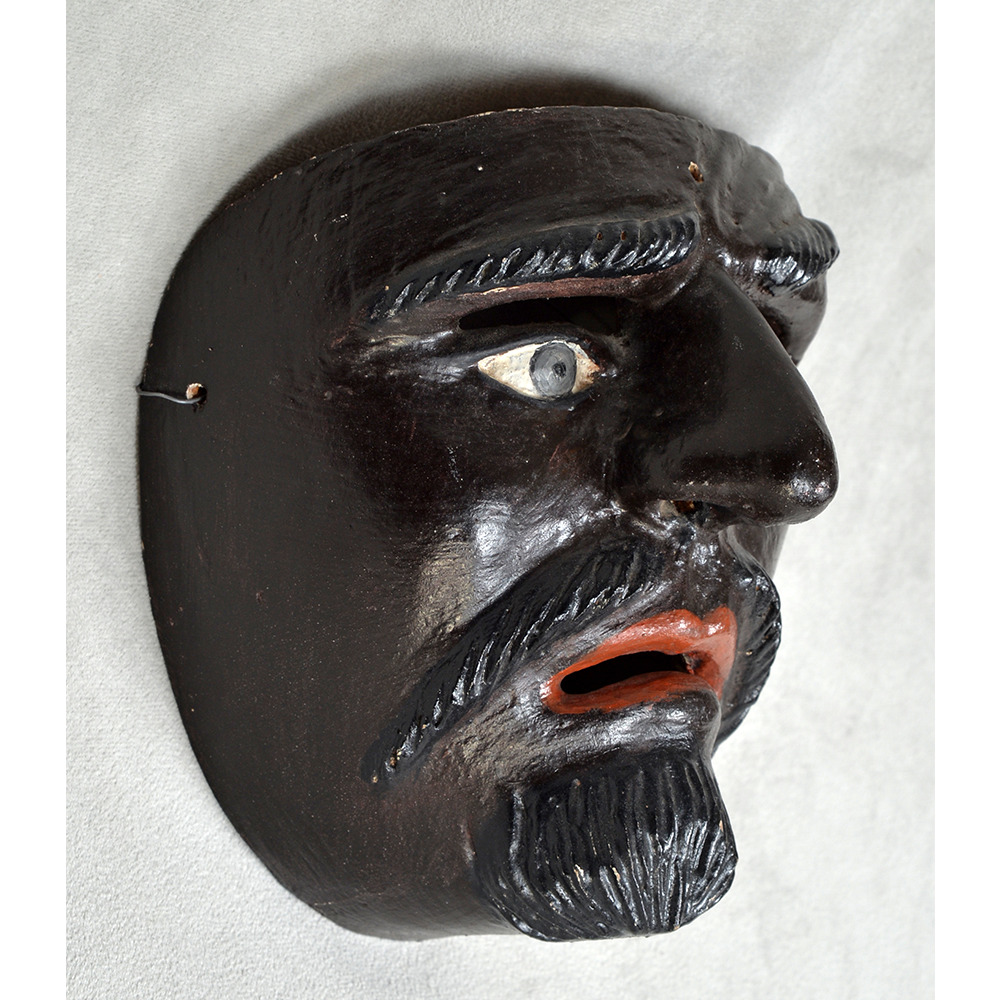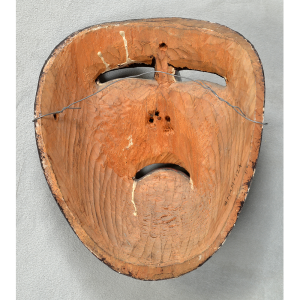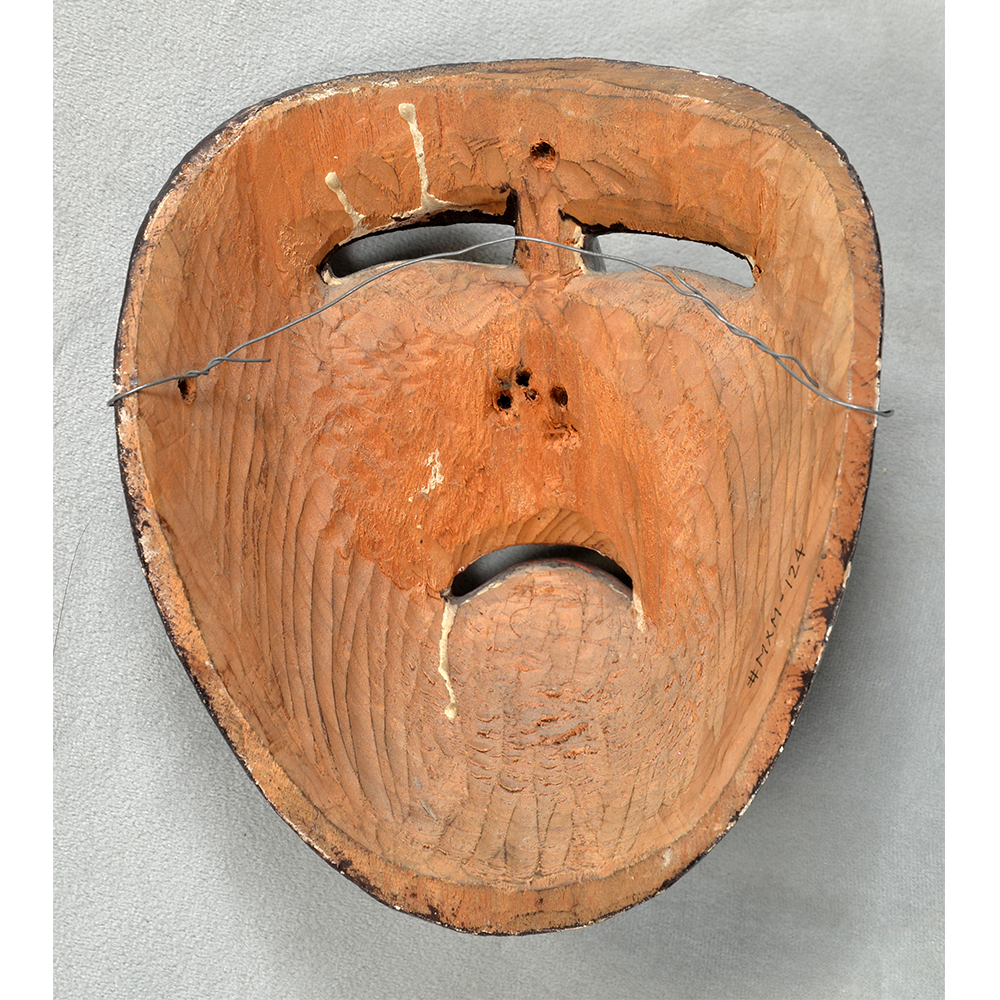TITLE: Rubio Mask
TYPE: face mask
GENERAL REGION: Latin America
COUNTRY: Mexico
SUBREGION: Oaxaca
ETHNICITY: Mixtec
DESCRIPTION: Rubio (Blond One) Mask
CATALOG ID: LAMX080
MAKER: Unknown maker in Santiago de Juxtlahuaca
CEREMONY: Danza de los Rubios (Carnival)
AGE: 1950s-1960s
MAIN MATERIAL: wood
OTHER MATERIALS: oil-based paint
The Danza de los Rubios (Dance of the Blond Ones), also known as Danza de los Pachecos (Dance of the “Stoners”) is a ceremony performed during the Carnival in the Mixtec region of Oaxaca. The rubio characters dress as charros (cowboys) in chaps, spurs, sombreros, and dark masks, and carry leather whips. They are said to represent the native country folk who become drunk on aguardiente after a hard day’s work herding cattle. They dance with elaborately dressed women (sometimes masked, sometimes not) to the chilena music of violins and the jarana, a small guitar-like instrument, and periodically comment on difficulties of the cattle drive. The dance probably dates back a century or more. Characters include El Caporal (the leader), the Caporal‘s wife (María Cotita), the Caporal‘s mistress (María Lencha), and various cowboys, named Alvarado, El Rubio, Margarito (also known as the Chile Verde), and Pachequito. In addition, one or more rubios wearing a large leather bull figure over his head and shoulders, representing a troublesome toro (bull), appears to illustrate the rigors of the cattle drive, as the charros struggle to control the cattle. The masks are frequently disfigured to represent the drunkenness of the characters. This specific mask may represent any of the rubios or the Caporal himself.
